Fall IDF 2007 – Intel DX38BT ‘BoneTrail’ Motherboard Preview
Looking At The Intel DX38BT Motherboard BIOS
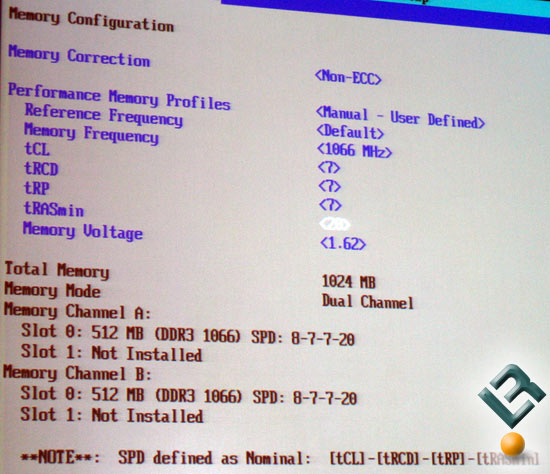
The Intel DX38BT motherboard has the usual looking BIOS, but under the performance tab where overclockers love to hang out, there are a few differences. At first glance everything looks normal, but after going a bit deeper the differences come out.
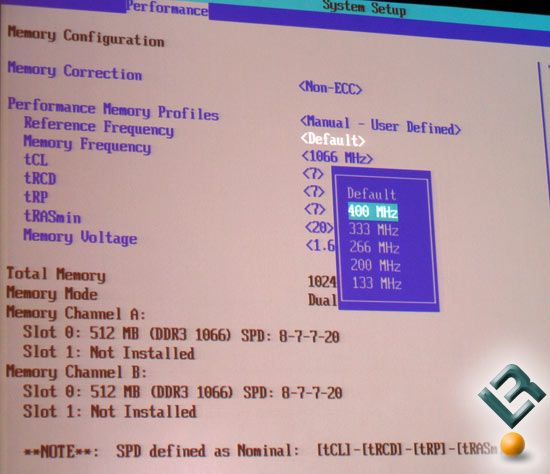
For starters the Reference Frequency of the processor now goes up to 400MHz FSB, which is a first for Intel desktop motherboards. Before 333MHz was the highest possible as it would mean 1333MHz after being quad pumped.
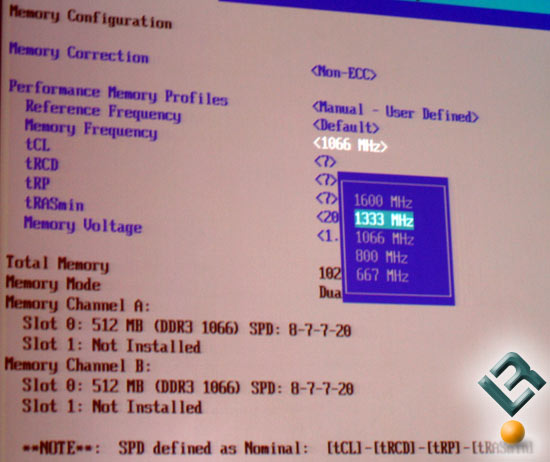
Looking at the DDR3 Memory Frequency settings we find an option for 1600MHz, which was rumored to be officially supported on the yet to be announced Intel X48 Express chipset and not on the X38 boards, so this is a welcomed surprise. There is an option for 667MHz, which is interesting as Ive never seen or heard of a DDR3 kit at this frequency. This low divider might have been left for overclockers though as overclocking beyond 400MHz FSB will be possible, so no complaints here!
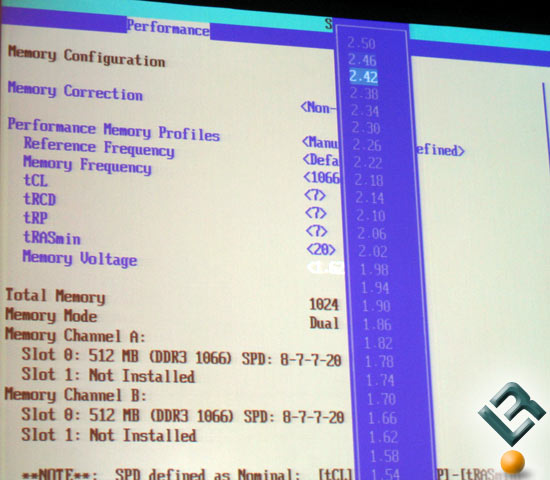
To reach memory frequencies this high Intel has opened up the memory voltages and allows enthusiasts to make .04 Volt adjustments from 1.50V all the way up to 2.50V. Current DDR3 memory kits are reaching 2000MHz at just 2.10V, so this board will have some head room built in for many months. One thing that was missing from the Performance menu was the ability to adjust the memory Command Rate from 1T to 2T. It turns out that Intel has enabled a command rate of 1T by default when modules are installed into banks 1 & 3, but when memory modules are installed in all four banks (1, 2, 3 & 4) it defaults to 2T all automatically. For practical purposes this is ideal, but for overclockers this might be an issue when overclocking memory kits past 1600MHz as this is where a number of kits dont like running 1T. Come to think of it the Super Talent DDR3 memory kit that we reviewed recently wasnt even able to post at all with 1T timings at respectable frequency (1333MHz or higher). What would that kit do on this board when it defaults to 1T? Hopefully Intel will catch this before the Intel DX38BT is released in a BIOS update and give end users the ability to chose between auto, enabled and disabled for the command rate like the majority of Intels board partners already do today on the Intel P35 Express chipset.
The CAS Latency still only goes down to CL5, there was talk between higher up Intel engineers that eventually it could be lowered down to CL4. Right now with the memory controller integrated into the North Bridge (X38 chipset) the memory timings dont play THAT big of a role on performance, but that will change next year when the 45nm Nehalem cores come out. When Nehalem enters the market it will feature a new system architecture called the Intel QuickPath Interconnect and a scalable & configurable memory controller that is built into the processor. Once the memory controller is in the processor memory timings will play a bigger role on Intel platforms, much like they do on current AMD platforms today.
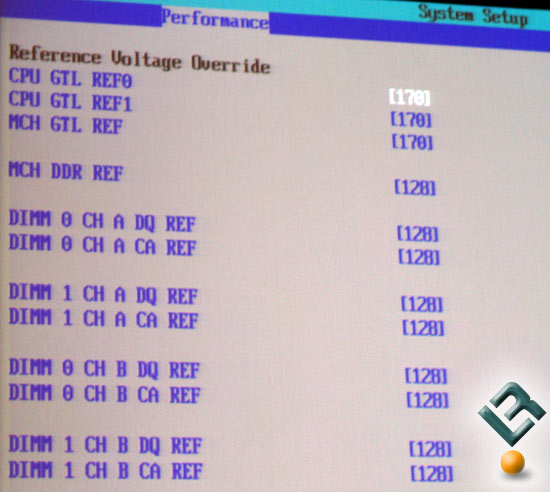
The biggest change in the Performance section of the BIOS under the System Setup menu is no doubt the introduction of Reference Voltage Override. Reference Voltage Override will give enthusiasts the ability to tweak settings that were once locked and hidden to be able to have more control over voltages than ever before. Intel was a bit tight lipped as to how to use these settings, but we are sure as time goes on that we will find out and report back to you. From my understanding the adjustments made under the reference voltage override menu change the nominal voltages for improved signal delivery for the CPU, FSB (MCH really) and memory modules. By doing so the platform then things that the voltage you are giving it is the right voltage and not too much or too little. How big of an impact this will mean for performance or energy efficiency has yet to be determined.

Comments are closed.